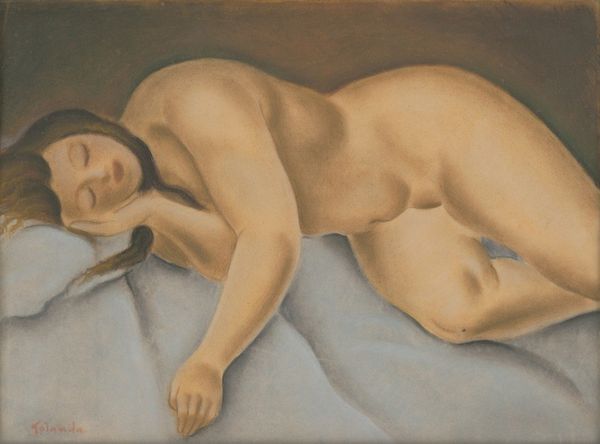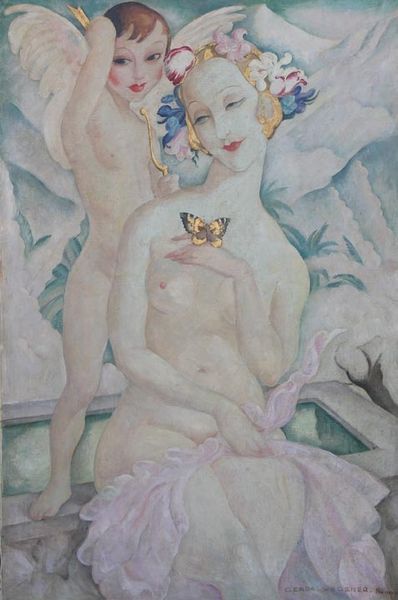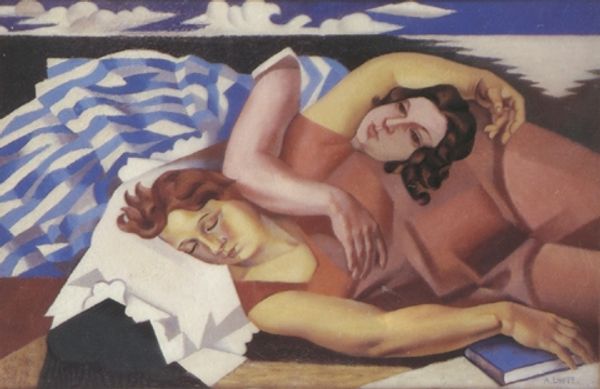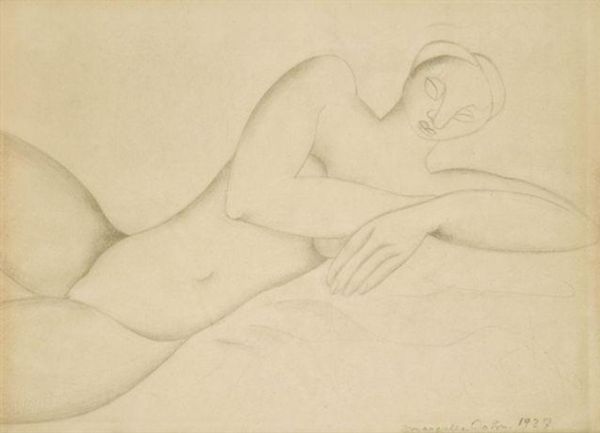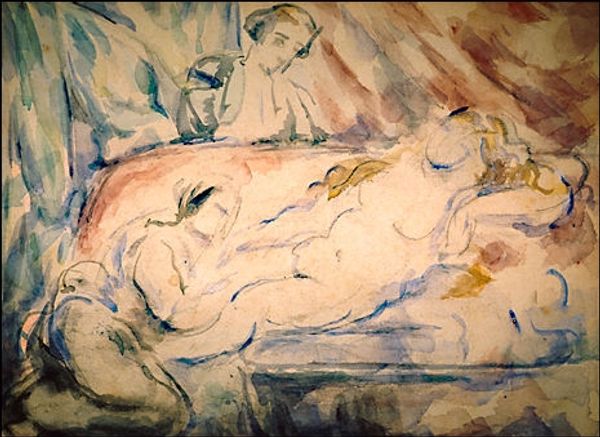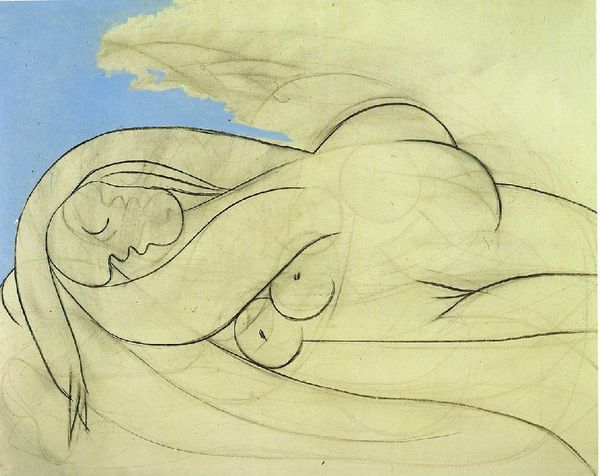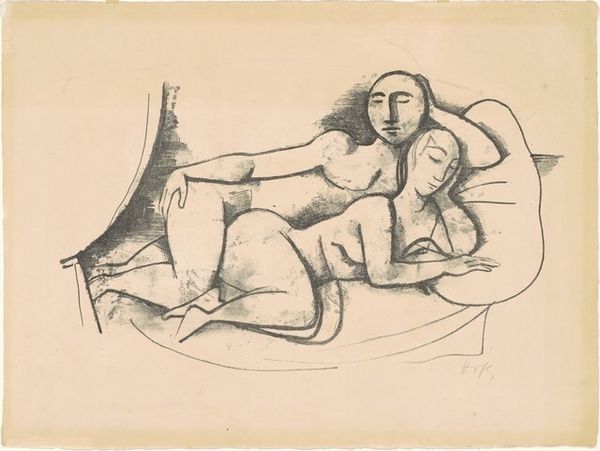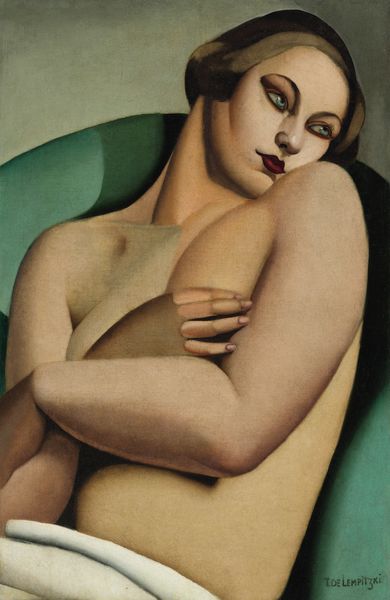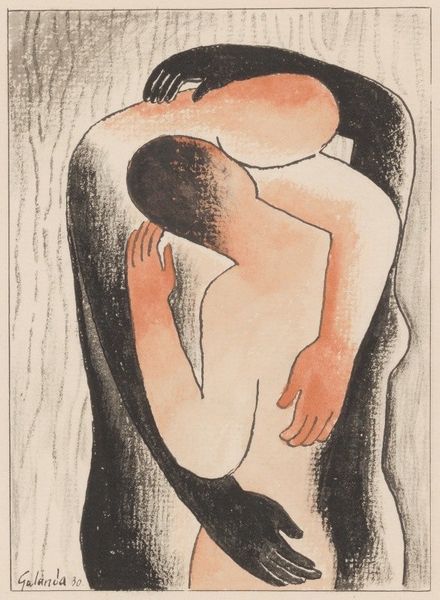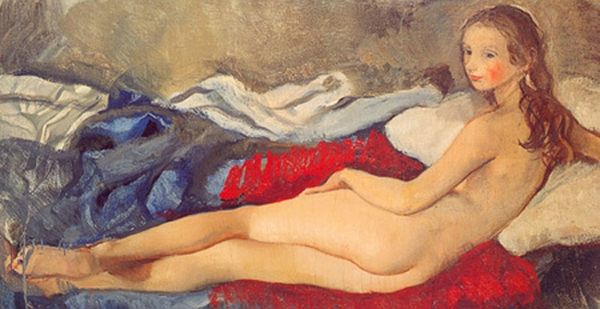
Copyright: Jose de Almada-Negreiros,Fair Use
Curator: The first impression I get from this painting is of stillness, almost as if the artist was holding their breath. Editor: That’s perceptive. This oil painting, “Female nude (for the decoration of Bristol club),” was painted in 1926 by Jose de Almada-Negreiros. What aspects contribute to this sensation of suspended time for you? Curator: It’s in the subtle gradations of color, I think, like gentle exhalations of breath. The palette is limited, mainly variations of off-whites, with touches of blue and red. There's very little strong contrast, which contributes to the soft, diffused light. It gives an effect of being underwater, everything slowed and muffled. I keep coming back to those red heels. Editor: Precisely, those accents of rouge really draw your eye. The female figure reclines elegantly, almost elongated, with a mirror in her hand, and yet, her gaze seems directed inward rather than at her reflection. How does this directionality influence the painting’s themes? Curator: Yes! She isn’t really observing herself at all, is she? It's as if she’s trying to get a read on herself through this reflective device, attempting to pin herself down in one, stable image. But the romantic, hazy execution defeats that purpose, doesn’t it? As does her rather unfocused, distant expression... We're left feeling she’s ultimately unknowable. And in that, profoundly mysterious and evocative. Editor: Right. In that sense, the mirror also represents our own experience of viewing the artwork; we use it to observe ourselves observing her, bringing layers of self-awareness into the space. Almada-Negreiros uses art not to imitate life but rather to create a reflective dialogue between artwork, subject, and observer. It’s all about those layers! Curator: So true. It strikes me how relevant such a sentiment still is; in this age of filters and selfies, the painting reveals the underlying impulse towards self-inspection and idealized representation…it's very modern. Editor: Definitely. We may, ultimately, be staring into the painting not simply to analyze brushstrokes and composition, but, far more compellingly, to scrutinize our own identities reflected back at us.
Comments
No comments
Be the first to comment and join the conversation on the ultimate creative platform.
